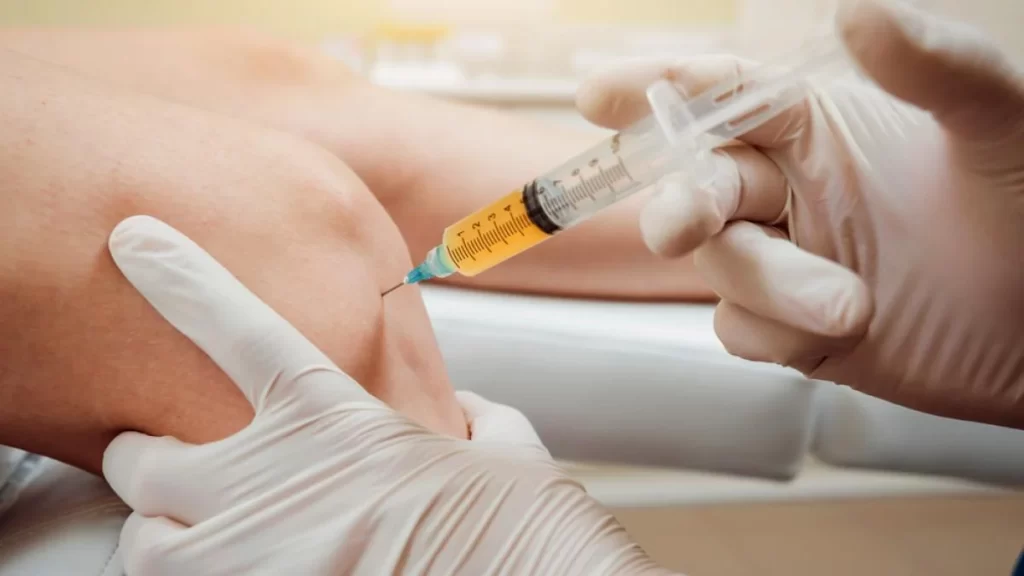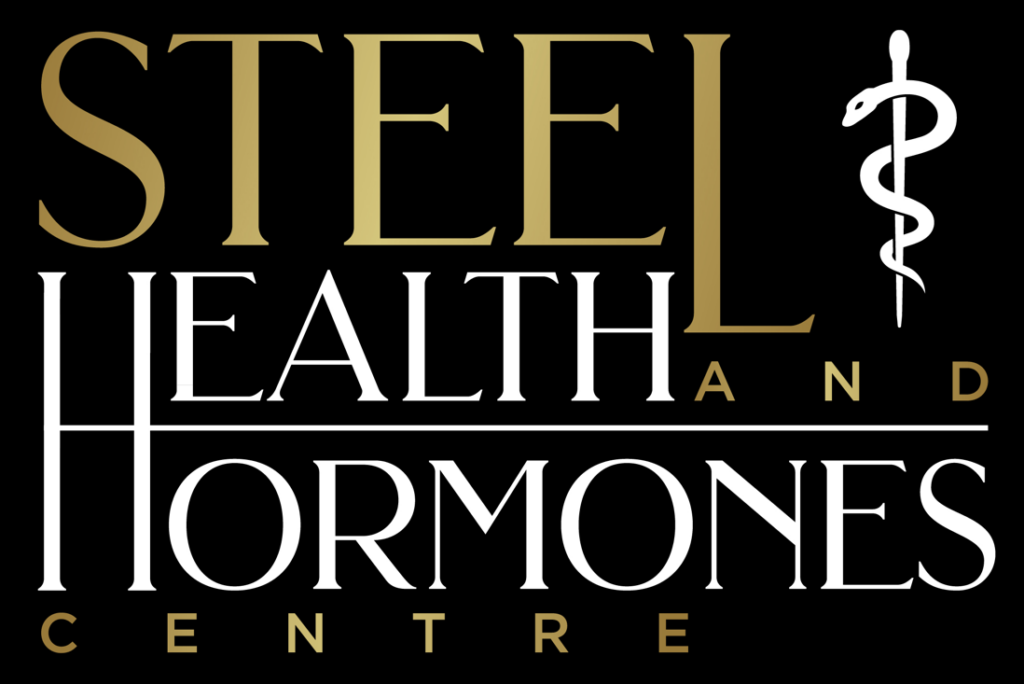Steel Health and Hormones Centre exists to help people look their best, feel their best, and perform at their best. With offices in Delmont and Wexford, we strive to be the premier private preventative medical center in Pittsburgh. We’ve been offering Bioidentical Hormone Replacement Therapy and Medical Weight Loss since we opened our doors. However, to be a true preventative medical clinic, we needed to expand into regenerative medicine; hence, we’ve branched into Stem Cell Therapy, Platelet Rich Plasma Therapy, and peptides.
The focus of this article will be on Platelet Rich Plasma Therapy (PRP). We’re going to look at how it works and the evidence surrounding its efficacy. After reading this article, you should have a sound understanding of what PRP is, how it works, and if it’s right for you.
As always, it’s important to understand that I am not a doctor. I am a 50% owner of Steel Health and Hormones Centre, along with my partner Dr. Ralph Petrarca. We’ve been immersed in the science surrounding preventative (and now regenerative) medicine for years, but that doesn’t mean this article should be used to diagnose, treat, or prevent any medical condition. You should always seek the care of a qualified medical professional (like the ones we hire) to diagnose, treat, and prevent any and all medical conditions.
Finally, a basic understanding of injury and injury recovery is essential to understanding how PRP works. When you get injured, your body has an instant inflammatory response to bring blood to the area. This blood carries with it nutrients to help repair cells. Your body also brings growth factors and stem cells to replace cells that are beyond repair. Inflammation is essential to the recovery process, but chronic inflammation can result in long-term pain and a decreased quality of life. This simple understanding of injury, injury recovery, and pain is all you need to know to grasp the theoretical underpinnings of PRP.
Now let’s get into this…
What is PRP and How Does It Work?
One of the most widely cited articles surrounding the definition of PRP comes from Dr. Robert E. Marx, who specializes in oral and maxillofacial surgery. Dr. Marx, like every surgeon, was attempting to find a way to get his patients to heal faster after surgery so they could return to their normal lives. It’s noteworthy to understand the climate that Dr. Marx was in when he was doing his research—PRP was developed in the 1970s as part of blood transfusion medicine for patients suffering from thrombocytopenia (low platelet count). His understanding of hematology showed him that there are significant growth factors in blood, and if blood could be prepared in a way that allowed the growth factors to reach the injured area and remain there, then recovery could be enhanced by promoting cell division and replacing the cells that are damaged or destroyed. Dr. Marx understood that PRP contains these growth factors and may be a way to promote healing and recovery.
Some growth factors in PRP and how they can aid in recovery include:
- Platelet Derived Growth Factor and Epidermal Growth Factor: These help increase the number of new cells in the area by encouraging cell division and specialization. Remember, cells that are beyond repair need to be replaced.
- Vascular Endothelial Growth Factor: This is responsible for creating new blood vessels, which will help deliver more nutrients to the injured area and result in faster healing.
- Stem Cell Attraction: While PRP isn’t true stem cell therapy, it does attract stem cells to the injured area. Stem cells with appropriate signaling can become the cells that they attach to, thereby rebuilding the injured or destroyed cells.
- Inflammation Modulation: There seem to be components in PRP that can aid in lessening inflammation after the initial response.
Dr. Marx also established a standard for collecting PRP. PRP is collected by separating platelet- rich plasma from the rest of the blood. The blood must be taken from the patient (autologous blood—no risk of rejection or foreign blood-borne diseases) and put in a centrifuge to spin it extremely quickly. Through the disparate weight in blood components, the centrifugal force separates the red blood cells from the plasma (which contains the platelets). With the plasma and the red blood cells separated, the plasma alone must be spun again. This second spin (also known as the soft spin) is essential to obtaining PRP. Providers who only perform one spin, regardless of duration or speed, cannot get true PRP but instead would have a combination of PRP and Platelet Poor Plasma (PPP), which is outside the scope of this article and the intent of Dr. Marx.
After the PRP is separated from the rest of the blood, it is used to promote healing. In Dr. Marx’s case, he mixed it with bone grafts, sprayed it on soft tissue surfaces, or used it as a biologic membrane. He found that PRP continued to release growth factors for days (which promotes healing) after its application.
In short, PRP is a specific component of blood that contains a significant amount of native growth factors and must be extracted through centrifugal force; this is then applied to the injured area to promote blood flow and healing.
Does PRP Work?
Now that we have a clear definition of PRP and an understanding of the theoretical underpinnings of its efficacy, does it actually work?
In terms of rigorous, placebo-controlled, double-blind studies—the gold standard of research— we are severely lacking in this department. I can find five studies that show tremendous efficacy, and I can find five studies that show no difference in the rate of recovery.
There are several reasons for this:
- Lack of Standard of Care: Many clinicians use a laboratory centrifuge to attempt to circumvent the large cost of a centrifuge designed for PRP. As someone who owns a medical company with medical devices, I can attest that they are NOT cheap, but in this respect, you really do get what you pay for.
- Lack of Follow-Up PRP Therapy: Dr. Marx showed that PRP was able to increase growth factors for days after injection. This may be all that’s needed for an acute injury; however, conversations with providers who practice rather than conduct research indicate that many injuries require multiple treatments—usually three treatments, one every six weeks.
- Returning to the Field of Play Too Quickly: I’ve done this, and chances are, you’ve done this too. Just because the therapy was conducted does not mean you’re immediately ready for play. The body still needs time to recover.
When we’re lacking vigorous studies, I believe the next best thing we can do is seek a consensus from the providers who actually perform PRP on a daily basis. Luckily for us, there is one such study conducted in Germany in 2020 in the Journal of Experimental Orthopedics. The study surveyed 65 orthopedic and trauma surgeons regarding their opinion on PRP.
Here are the results:
- 89% of these experts believed PRP was useful.
- 77% of the surgeons believed it was helpful in tendon pathologies.
- 68% agreed it helped with osteoarthritis.
- 57% believed it helped with muscle injury.
- 51% agreed that it helped with cartilage damage.
Even though Dr. Marx set the standard for PRP preparation, the researchers concluded that no sufficient data exists on the time interval between injections, how many injections are needed, and a standardization of PRP preparation. Additionally, the skill of the medical provider can also dictate the outcome of the therapy. If a provider misses the injured area, your recovery may not be aided at all. Despite the varied results for some patients, PRP remains a popular treatment because, when done correctly, many patients see positive results.
Steel Health and Hormones Centre adheres to a gold standard when it comes to PRP therapy. Our patients can expect a safe and sanitary environment. First, we draw your blood; since it’s your own blood, there is zero chance of rejection. We then put it in a medical-grade centrifuge designed specifically for medical procedures—not for standard experimentation. We follow Dr. Marx’s protocol of spinning it twice. We then inject the injured area to promote healing. You can expect to see us three times, with each therapy being spaced six weeks apart.
In short, the people who use PRP regularly see its efficacy. However, the provider and approach to PRP can yield vastly different outcomes. If you decide to choose us for your PRP care, you can rest assured that we’re following Dr. Marx’s approach to PRP therapy.
Is PRP Right for You?
Answering this question requires further exploration before a definitive “yes” or “no” can be reached. The first question to consider: are you willing to undergo multiple procedures? Conversations with providers suggest that three treatments are required to make a significant difference. If you aren’t willing to commit to that, you should probably pass.
The next question: is this a catastrophic or acute injury, or is it pain related to osteoarthritis? An injury such as a grade 3 ACL strain or a detached muscle will probably not recover from PRP alone. An injury that requires major reconstructive surgery may benefit from PRP after the surgery to aid in recovery, but it won’t heal a catastrophic injury. PRP seems to be most useful in acute injuries that may eventually heal on their own, but your lifestyle or timeline doesn’t allow it—if you’re an athlete trying to return to the field of play faster, or a fitness enthusiast looking to minimize downtime, PRP could be a great option. There is also evidence to suggest that PRP is helpful for those with osteoarthritis by helping to reduce inflammation, a common cause of chronic pain.
If you’re interested in exploring whether PRP is a viable treatment option for you, please reach out to our team at Steel Health and Hormones Centre by filling out a contact form below this post and someone will be in touch within 24 hours. We would love to provide you with the information you need to make a sound decision regarding your healthcare!
FAQs
How long does it take to see results from PRP therapy?
Results can vary, but many patients start to notice improvements within a few weeks, with optimal results often seen after a few months.
Is PRP therapy painful?
Some patients may experience mild discomfort during the injection process, but it is generally well tolerated.
Are there any side effects of PRP therapy?
Since PRP is derived from your own blood, the risk of adverse reactions is minimal. Some patients may experience temporary swelling or soreness at the injection site.
How much does PRP therapy cost?
The cost of PRP therapy can vary depending on the treatment area and the provider, but it’s important to discuss pricing and financing options with our team.
Bibliography
https://link.springer.com/article/10.1186/s40634-020-00282-2



